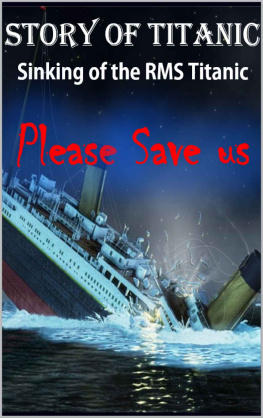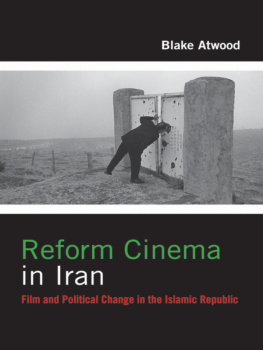Patel - The Rise of The Islamic Republic of IRAN
Here you can read online Patel - The Rise of The Islamic Republic of IRAN full text of the book (entire story) in english for free. Download pdf and epub, get meaning, cover and reviews about this ebook. year: 2021, genre: Politics. Description of the work, (preface) as well as reviews are available. Best literature library LitArk.com created for fans of good reading and offers a wide selection of genres:
Romance novel
Science fiction
Adventure
Detective
Science
History
Home and family
Prose
Art
Politics
Computer
Non-fiction
Religion
Business
Children
Humor
Choose a favorite category and find really read worthwhile books. Enjoy immersion in the world of imagination, feel the emotions of the characters or learn something new for yourself, make an fascinating discovery.
The Rise of The Islamic Republic of IRAN: summary, description and annotation
We offer to read an annotation, description, summary or preface (depends on what the author of the book "The Rise of The Islamic Republic of IRAN" wrote himself). If you haven't found the necessary information about the book — write in the comments, we will try to find it.
Patel: author's other books
Who wrote The Rise of The Islamic Republic of IRAN? Find out the surname, the name of the author of the book and a list of all author's works by series.
The Rise of The Islamic Republic of IRAN — read online for free the complete book (whole text) full work
Below is the text of the book, divided by pages. System saving the place of the last page read, allows you to conveniently read the book "The Rise of The Islamic Republic of IRAN" online for free, without having to search again every time where you left off. Put a bookmark, and you can go to the page where you finished reading at any time.
Font size:
Interval:
Bookmark:
Section 1: Iranian Revolution
Chapter 1: History of Iranian Revolution
1.1 Tobacco Protest (1891)
1.2 Persian Constitutional Revolution (190511)
1.3 Reza Shah (192135)
1.4 Mosaddegh and The Anglo-Iranian Oil Company
1.5 Iranian coup d'tat (1953)
1.6 White Revolution (196378)
1.7 Rise and exile of Ayatollah Khomeini (1963)
1.8 Ideology of the Iranian Revolution
1.9 Opposition groups and organizations
Chapter 2: Approaching revolution (1978)
2.1 Beginning of protests (January)
2.2 Consolidation of the opposition (FebruaryMarch)
2.3 Government reaction
2.4 Early summer (June)
2.5 Renewed protests (AugSept)
2.6 Cinema Rex fire (19 Aug)
2.7 Declaration of martial law and the Jaleh Square Massacre
2.8 Reactions to Black Friday
2.9 Nationwide strikes (SeptNov)
2.10 Khomeini moves to the West (Nov)
2.11 University of Tehran protest (5 Nov)
2.12 Appointment of a military government (6 Nov)
2.13 Muharram protests (early Dec)
2.14 Tasu'a and Ashura marches (1011 Dec)
Chapter 3: Revolution (late 19781979)
3.1 Demoralization of the Army (December, 1978)
3.2 American and internal negotiations with the opposition
3.3 The Shah leaves (January, 1979)
3.4 Bakhtiar's premiership and Khomeini's return
3.5 Armed battles and collapse of the monarchy
3.6 Casualties
3.7 Songs of Iranian Revolution
Chapter 4: Women's role
4.1 Khomeini's rhetoric on women's participation
4.2 Variation within women's participation
4.3 Academic literature on women's participation
Chapter 5: Aftermath: Khomeini's consolidation of power
5.1 Conflicts among revolutionaries
Chapter 6: Organizations of the revolution
6.1 1979 uprisings
6.2 Establishment of Islamic republic government
Chapter 7: Aftermath: Revolutionary crisis
Chapter 8: International impact
8.1 Persian Gulf and the IranIraq War
8.2 Western/U.S.Iranian relations
8.3 In the Muslim world
Chapter 9: Domestic impact
Chapter 10: Islamic political culture
Section 2
Iran hostage crisis
Chapter 1: History of Iran Hostage Crisis
1.1 Carter administration
Chapter 2: Prelude
2.1 Second attempt
2.2 Takeover
2.3 Motivations
Chapter 3: Discovered documents of the American embassy
Chapter 4: The 444-day crisis
4.5 Negotiations for release
4.6 Planned second attempt
Chapter 5: Aftermath
5.1 Consequences for the United States
5.2 Diplomatic relations
5.3 Hostages
5.4 Civilian hostages
5.5 Hostages honored
5.6 Notable hostage-takers, guards, and interrogators
Chapter 6: October Surprise conspiracy theory
Section 3:
Iran Iraq War
Chapter 1: History of War
1.1 After the Iranian Revolution
1.2 Iraqi preparations
1.3 Iranian preparations
1.4 Border conflicts leading to war
Chapter 2: Course of the war
2.1 First Battle of Khorramshahr
2.2 Iraqi advance stalls
2.3 1981: Stalemate
2.4 Battle of Dezful
2.5 Attack on H3
2.6 Introduction of the human wave attack
2.7 1982: Iraqi retreat, Iranian offensive
2.8 Liberation of Khorramshahr
2.9 198384: Strategic stalemate and war of attrition
2.10 Battle of the Marshes
2.11 Attacks on shipping
2.12 Attacks on cities
2.13 198586: Offensives and retreats
2.14 First Battle of al-Faw
2.15 Battle of Mehran
2.16 198788: Towards a ceasefire
2.17 Strategic situation in late 1987
Chapter 3: Domestic situation
Chapter 4: Comparison of Iraqi and Iranian military strength
Chapter 5: Foreign support to Iraq and Iran
Chapter 6: U.S. involvement
Chapter 7: Iraq's use of chemical weapons
Chapter 8: Differences from other conflicts
Chapter 9: Iran and Iraq's modern relationship
Font size:
Interval:
Bookmark:
Similar books «The Rise of The Islamic Republic of IRAN»
Look at similar books to The Rise of The Islamic Republic of IRAN. We have selected literature similar in name and meaning in the hope of providing readers with more options to find new, interesting, not yet read works.
Discussion, reviews of the book The Rise of The Islamic Republic of IRAN and just readers' own opinions. Leave your comments, write what you think about the work, its meaning or the main characters. Specify what exactly you liked and what you didn't like, and why you think so.
















